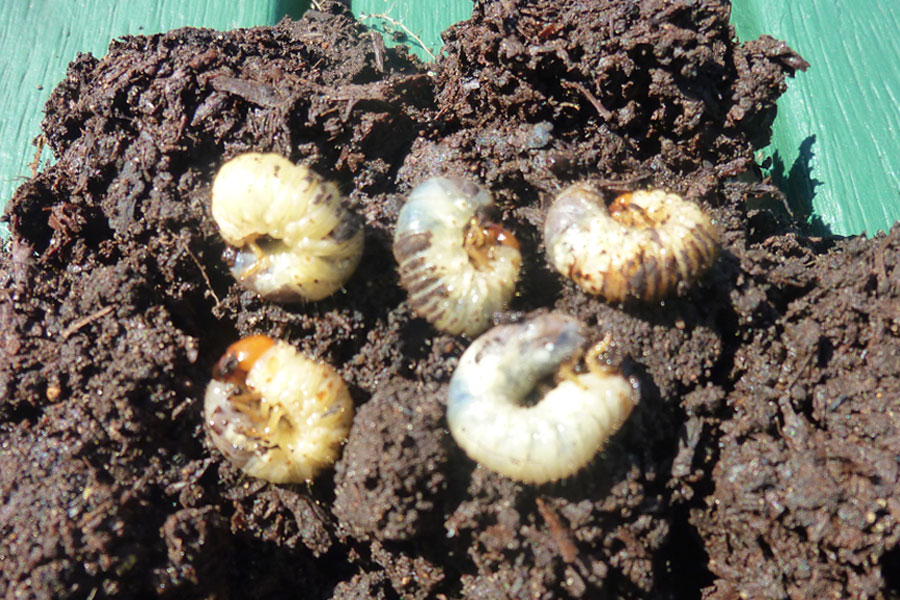One of the best places in the house is the backyard. This area is where one can set up a beautiful lawn or practice farming skills as a want-to-be farmer. It is measurable the amount of time and resources one puts in place to make their patios look exceptional, and it would hurt if anything ruins everything. However, before one undertakes a process of growing grass, flowers, or any other kind of plant in their courtyards, it is essential to consider the risk factors. One thing to note is that there will be unwanted guests such as grub worms hell-bent on damaging whatever root or leaves of plants they come across. Grub worm damage is real, and every person needs to take precautions to achieve success with their project.
Everyone loves their lawns looking green and full of life. However, here comes the life of grubs’ turn beetles determined to destroy the grass and plants in the patios. It is such a nuisance working extra hard to beautify a yard, and in a short while, agents of destruction, worms, make an invasion. While other worms are useful to plants’ soil and growth, others such as grub worms aim at destroying what is in place. This type of worm destroys by eating up the roots of the grass and plant leaves the moment they become adult beetles. However, like any other pests, there are ways of eliminating these worms from the lawn, and the first way knows how to identify signs of them existing. Some of the things to look out for include;
Discolored Patches

The most obvious sign that something is not happening right in the lawn is the discoloration of patches on the grounds. This could mean the section is dead, and several factors, including worm invasion, could be the cause. Immediately one notices the grass turning yellow or brown; they need to act quickly to save the rest of the lawn.
Spongy Lawn
Since the worms eat up the grassroots, it leaves the whole section loose and more comfortable to pull up. A better way to determine whether the grubs are beneath is to conduct a standard test known as the tug test, where one spots a place where the grass has turned into brown or yellow and tries to pull it out. For any dormant and healthy grass, there will be resistance. On the contrary, a section of the lawn that easily comes out with slight pulling could indicate grub worms in the soil.
Rodent and Bird Activities
In the animal food chain, rodents such as raccoons feed on worms and other insects present in the lawn area. Also, birds and moles are such kinds of feeders that look onto such worms every day as food. In the event the bird and raccoon activities increase in the backyard, the possible reason could be the infestation of the lawn by grub worms. Each morning when one notices certain lawn spots dug by raccoons, it could mean there are some unwanted guests underneath the grass. While many would get annoyed by the rodents, the main problem lies within the lawn. The best way to deal with the raccoon and mole invasion is by keeping the grub worms off the lawn.
Getting Rid of Grub Worms

It is immeasurable the level of grub worm damage on lawns, and as such, a good farmer or somebody looking forward to having nice turf grass has to put on a fight. Eliminating grubs will be easier if they are not left to become adults since they lay eggs to cause an infestation. Some of the things to consider include;
Spraying Pesticides
There is a range of insecticides available in the market, but one that contains ingredients such as imidacloprid, bifenthrin, and carbaryl would work effectively. When going for insecticides, it is crucial to consider those of the best quality since some substandard items would extend the harm to the lawn. The two commonly used grub killers get categorized into two, liquid and granular killers. The following are what to follow when using such pesticides;
- Those who opt for liquid grub insecticides should mix the content with water as instructed on the label and conduct a thorough spray session on the lawn.
- For granular grub killer users, spread the container’s content and water the yard to ensure the insecticide reaches the grubs.
Using Nematodes
Nematodes are tiny roundworms that could be applied on the lawn to eat up the grubs in a short while. However, it is essential to go for the beneficial nematodes for the whole process to work effectively. After getting the worms, mix them with distilled water and spray to the lawn infested by grubs.






